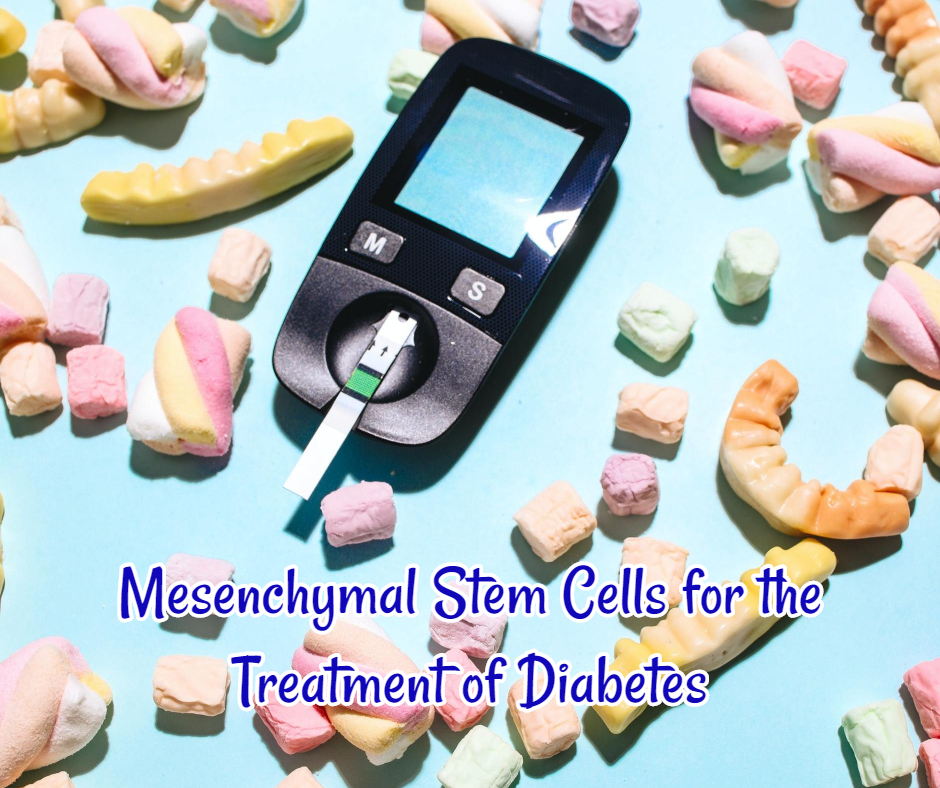This Study Reviews Mesenchymal Stem Cells for the Treatment of Diabetes. At Dream Body Clinic we use mesenchymal stem cells administered at 300 million MSCs in an IV for the treatment of Type 2 Diabetes. Learn more about dream body clinic’s type 2 diabetes stem cell therapy here.
The field of regenerative medicine is rapidly evolv-ing, paving the way for novel therapeutic inter- ventions through cellular therapies and tissueengineering approaches that are reshaping thebiomedical field. The remarkable plasticity of differentcell subsets obtained from human embryonic and adulttissues from disparate sources (including bone marrow,umbilical cord, amniotic fluid, placenta, and adiposetissue) has sparked research endeavors evaluating use of these cells for numerous conditions, including diabetes andits complications (1). A readily accessible source for multipotent stem cells isthe bone marrow, which comprises progenitors of hema-topoietic, endothelial, and mesenchymal stem cells (MSCs).Unfractioned and fractioned bone marrow–derived stemcells have been used in experimental and clinical settingsto improve diabetes and diabetes complications. Bonemarrow–derived MSCs are stromal, nonhematopoietic cellsgenerally obtained from iliac crest aspirates following en-richment based on their preferential adhesion on culture vessels in defined media. MSC characterization relies onexpression of specific surface markers and on their abilityto differentiate into fat, bone, and cartilage when exposed toappropriate culture conditions (2).Recent clinical trials have demonstrated powerful im-munomodulatory effects of the inoculum of MSCs to treatgraft-versus-host disease (3,4), to improve allogeneic renaltransplant outcomes using lower immunosuppressive reg-imens (5), and to reduce immune cell activation in patientswith multiple sclerosis and amyotrophic lateral sclerosis(6). Autologous MSCs were shown to improve Crohn dis-ease lesions refractory to other therapies (7,8) and weretested for treatment of ischemic hearts (9).In the context of diabetes research, MSCs have beenused to generate insulin-producing cells (10), counteractautoimmunity (11,12), enhance islet engraftment and sur- vival (13,14), and to treat diabetic ulcers and limb ischemia (15). Also, MSC inoculum improved metabolic control inexperimental models of type 2 diabetes (T2D) (16). Non-randomized, pilot trials in T2D suggest a positive impact of bone marrow–derived mononuclear cells on metaboliccontrol (i.e., reduction of insulin requirements and of A1C values) in the absence of adverse events following intra-arterial injection by selective cannulation of the pan-creas vasculature (17,18). Unfortunately, because thesestudies are small and lack in-depth mechanistic analyses,it is yet unknown how MSCs exert their beneficial effects inT2D.The interesting study by Si et al. (19) attempts to un-derstand the effects of autologous MSC inoculum in a ratmodel of T2D (induced by high-fat diet for 2 weeks fol-lowed by a suboptimal dose of theb-cell toxin streptozotocin[STZ] to induce a hyperglycemic state). Autologous MSCswere administered either 1 or 3 weeks after STZ treatment.Improved metabolic control, measured by enhanced in-sulin secretion, amelioration of insulin sensitivity, andincreased islet numbers in the pancreas, was observed inanimals receiving MSCs particularly when MSCs weregiven early (7 days) after STZ treatment. Consistent with previous reports, the metabolic effects of MSC inoculumwere short-lived (for a period of 4 weeks), and reinoculum provided an additional, comparable, and transient effect.Clamp studies demonstrated significantly improved bloodglucose metabolism and insulin sensitivity in animals re-ceiving MSC therapy. A set of novel mechanistic data emerging from this study indicates that MSC therapy isassociated with improved insulin sensitivity via increasedsignaling (insulin receptor substrate-1 [IRS-1] and Akt phosphorylation upon feeding, as well as translocation of GLUT-4 on cell membrane upon insulin administration) inthe muscle, liver, and adipose tissue of animals receivingMSC inoculum, when compared with controls. Althoughmany questions remain unanswered, these data shed newlight on the effects of autologous MSC inoculum on insulintarget tissues in this rodent model of T2D.It is important to consider the potential confoundingelements that can be introduced by the disease model usedin this and other similar studies. In the model used by Siet al., it is prudent to be cautious because of the relativelyshort duration of diabetes before initiation of the inter- vention. This model may not fully reflect the physiopathol-ogy of the progressive development of human T2D.Si et al. (19) present important data that highlight theimportance of a cautious interpretation of the results of their T2D model. For instance, the positive impact of MSCtreatment on metabolic function was more pronouncedwhen administered early (7 days) than late (21 days)after induction of diabetes. STZ is a naturally occurringnitrosourea with various biological actions as well as in-duction of acute and chronic cellular injury on several tissues,including pancreatic b-cells, liver, and kidney. In the animalsreceiving labeled MSC inoculum “early” after STZ (but notin those in the “late” STZ group), MSCs accumulated in pancreatic islets and liver where they may have contrib-uted to tissue repair or remodeling, thereby mitigating theinjury induced by STZ and a high-fat diet and improvingmetabolic function. Preservation of b-cell mass was alsoobserved in the “early” MSC group, an observation that didnot appear to result from increased replication (assessedby Ki67 immunoreactivity), but rather from tissue repair and the cytoprotective properties of MSCs.
